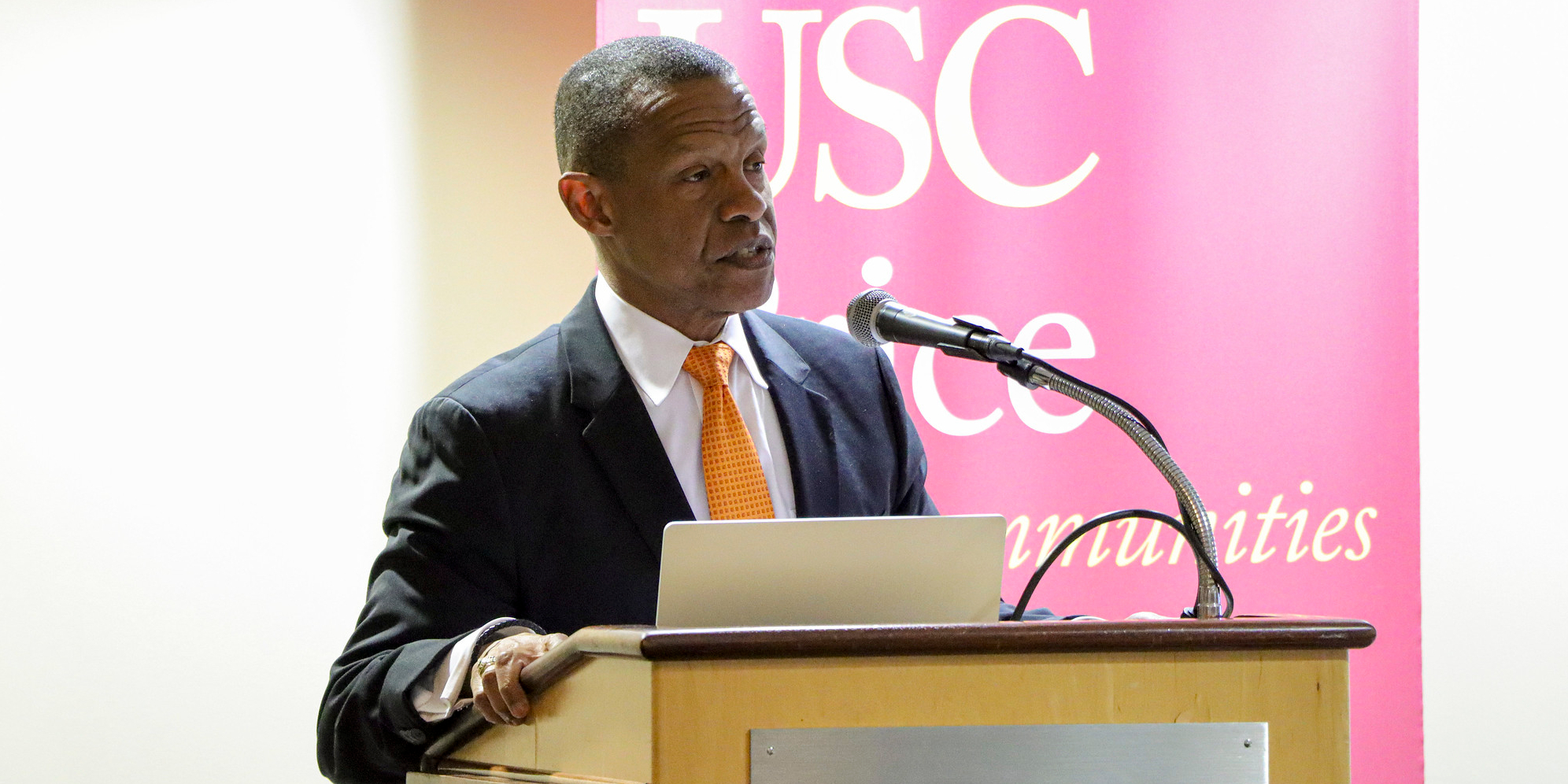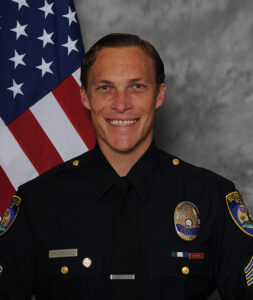There is a new resource in the effort to enhance police department accountability and engender public trust in law enforcement: the Police Misconduct Registry (PMR). SCI Director Dr. Erroll Southers explains what the registry is, how it works and why it is needed.
What was the origin of the Police Misconduct Registry?
Myself and others were having conversations about how to affect meaningful change in how communities and departments manage their police departments. Too often, the notion of “police reform” is reduced to a zero-sum proposition. We have groups who want to see all police departments defunded and abolished, which as unrealistic as it is a bad idea. But we also have groups who think change isn’t necessary. We began thinking about what we can do that both law enforcement and communities could embrace, something bipartisan that really moves the needle.
Then George Floyd was murdered. Seeing that 9 minute and 29 second video, the entire world became very aware that we have a problem in policing. It was a day after Mr. Floyd’s death that we decided we needed a registry to track problem officers and remove them from the profession. It’s a straightforward idea that everyone can get behind, and that shows in the number and diversity of people supporting the registry.
How does the registry contribute to real change in law enforcement?
It is extremely difficult to fire a police officer. Understand, officers have more rights than suspects. There is a peace officer’s bill of rights in most states, which grants incredible protection from misconduct charges. There is another problem. Of officers fired, about 25% get reinstated and many others simply apply to and are hired by another department. In fact, in California, New Jersey, Hawaii, Massachusetts and Rhode Island, even if you are fired, you can keep your certification. That means you may not need to repeat police academy training to join another department in the state. This is part of how problem officers stay in the profession.
An aspect to the challenge in addressing this is that there is too little visibility into who these officers are and where they work. The community has no way to track who is being hired by their local department, and the departments themselves might not have enough background into why an officer was fired or resigned from another agency. The PMR bridges this gap, and when the bouncing between departments stops, we will systematically remove officers from policing. That in turn leads to a longer term, lasting impact. This is not a “training” issue. When you eliminate the problematic people who make up a culture, the culture itself changes. This is one pathway to true police reform, and it’s something everyone can support.
What are the misconduct offenses that may cause a former officer to be entered into the registry?
They include but are not limited to excessive use of force, corruption, violent extremism, domestic violence, sexual assault, physical assault and harassment, perjury, falsifying a police report, and planting or destroying evidence. Notice that it is not just misconduct on the job. If someone is committing domestic violence, that is suggestive of how they operate with the public and in any case is not someone who is fit to wear a badge and carry a weapon.
Also, entry into the registry is not just for officers who were fired for misconduct. It includes those who resigned due to misconduct. When an officer is being investigated for misconduct and they resign, typically, the internal investigation stops. While some departments are beginning to close this loophole, it remains a way for problem officers to dodge bigger legal consequences because the investigation is never completed. The PMR prevents bad cops from resigning their way out of accountability.
How will the registry be used by the public and police departments?
There are two portals in the registry. There is a public portal through which anyone can conduct a search of the database. It is completely free and simple to use. The reason for this is that because it is open to the public, everyone in the community can see if an officer on the local department has been previously fired or resigned due to misconduct. This helps communities hold police officials accountable. They can review the law enforcement roster or enter a name of someone they encountered, and if that person is in the registry, citizens are equipped to speak to the local leaders and police officials and ask, why was this person hired? There’s no more hiding behind the badge.
Just as important is the police department portal. This is an encrypted, login protected portion of the registry that gives somewhat more officer information and is useful for applicant screening. Searching the database precedes a background check. When an application is received, the first thing the department can do is search the PMR and decide if they want to move forward with an applicant. In addition, SCI scholars and partners will be researching misconduct data going back 50 years so we can identify trends leading up to misconduct. The insights will help departments with retention and facilitate better staffing decisions. As a hypothetical, we might find that if an officer works the night watch on the gang unit for a certain number of years, the public complaints start to pile up. The chief can then make a decision that their officers will not work on that detail beyond a certain time limit. People are familiar with the concept of predictive policing. This is predictive misconduct in the police department.
Will entry in the PMR create a risk to former officers’ safety?
Nothing about PMR will compromise the safety of former officers or their families. The only data added into the registry is information that is already public. We draw from court records, police notices, news reports and other open sources. We have a dedicated team pouring through data, and just because a firing or resignation is obscure doesn’t mean it will go unnoticed. We notice.
It is encouraging that people from communities around the country are independently sending us links and notices we had not found yet. This is becoming a grassroots effort. Everyone is a stakeholder, and that includes police departments. I’ve spoken with many chiefs of police about the registry, and all of them have said they don’t want someone in the registry working for them. Not only are departments supportive, they’re helping to improve it. We will be beta-testing the registry and looking forward to input from departments as we identify more categories of data that are valuable to their applicant screening and staffing decisions.
What is the PMR Advisory Board and what is its function?
They are the decision makers for how officers are added to or removed from the registry. It ensures that there is no unilateral process for managing the data. Advisory board members will adjudicate the more difficult, nuanced instances of whether an officer should be added to the registry. In cases of redress, they will also decide whether removing an officer from the registry is merited. The PMR will be fully transparent in how it is run, and the advisory board supports that.
The board will be diverse with regard to background, experience, expertise and interest. This includes officers and activists, academics and public sector leaders. We intend to invite people from across the country to join, establishing even more diversity of perspectives. Board members will have terms of 18-24 months, and their meetings will be held quarterly. Our staff will brief the board on potential entries and removals, and the board will vote.
How did the registry come to have its impressive roster of people supporting the initiative?
We were honored to have some inspiring public figures endorse the PMR from the beginning. Former Gov. Arnold Schwarzenegger, Congressmember Karen Bass, Miami Police Chief Art Acevedo and many others. We are also in discussions with and will soon announce other world-renowned individuals who are leaders in technology, sports, education, entertainment and other industries. The reason our partners and supporters are so important is that they advance our whole-of-community approach. They also help get the word out. We are depending on communities and citizens to insist to their local departments that they use the PMR, make their rosters available and be accountable to the people they are sworn to serve. When people can see themselves and their lived experiences reflected in our community of supporters, it helps instill the message, “This is all of us working together.” Change will never come from one person or one policy. We have to do it together.




